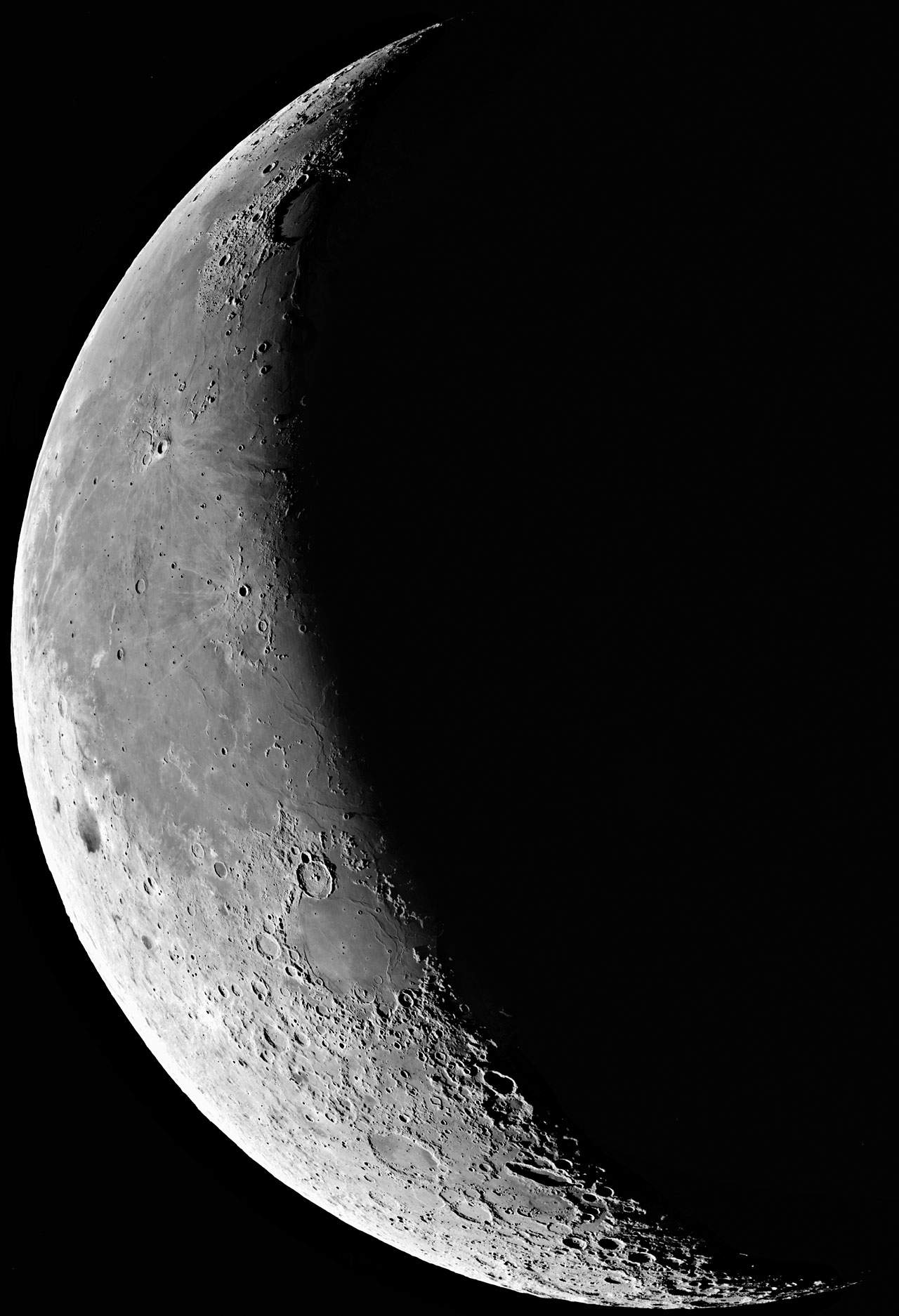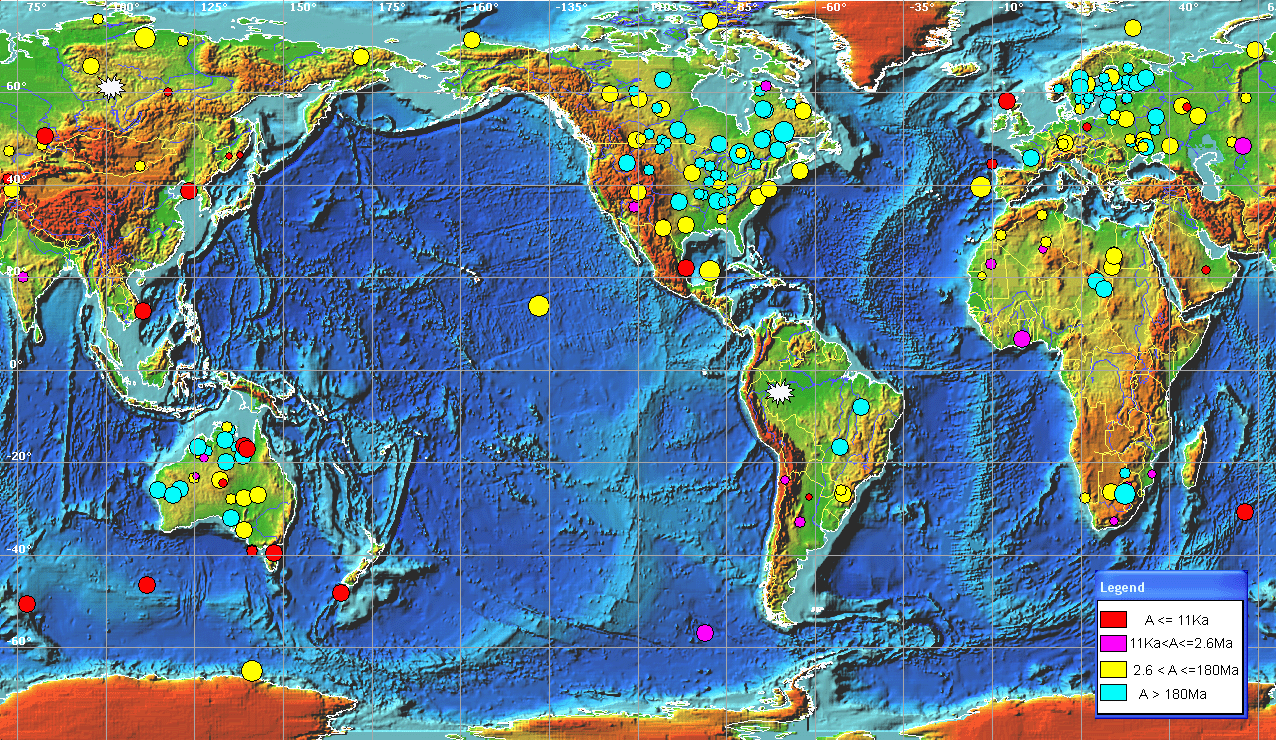How's my blogging? Leave some feedback, I get better at this, you get a more interesting read!
Catching up on a bit of news much closer to home than my usual subjects:
As a secondary school kid I learned that Earth simply doesn’t have
any really huge impact scars, the way our Moon does. Earth has weather, that
erodes them away. It has plate tectonics [1], that suck the ground they stand on
beneath the surface.
Image above: The Moon. You'd probably guessed that. The Moon looks like this, why would Earth, with a much bigger gravity field to pull objects in with, have gotten less of a beating? Image courtesy of the European Southern Observatory.
It’s all lies! There are major impact scars still on Earth - nearly 200 confirmed [2] - hidden by the ages but not erased by them. .
Image above: The 180 odd giant impact structures found on the land, and the 24 or so found on the seabed - the land's easier to search. White stars are where a large meteorite is known to have blown up mid-air. Image courtesy of the Expert Database on the Earth Impact Structures (EDEIS).
The latest one has been found [3] under Maniitsoq, in Greenland, and it was from a doozy of an explosion: The crater is about a hundred kilometres across now, and may have been up to five hundred kilometres wide when it formed* which
means the object that hit must have been around thirty kilometres big.
Had there been any form of life above algae on Earth at the
time it happened, it would have had a bad day that ended terribly, and quite
suddenly. But this happened three billion years ago, when Earth was a domain of micro-organisms, so while
they…. well in fact..... a rock at least three times longer than mount Everest, falling out of the sky at twenty to thirty
thousand kilometres an hour, is bad even if you’re a micro-organism.
Image above: The estimated size of the original impact crater (dotted circle) and the remaining scar (black filled circle). Image courtesy of the Geological Survey of Greenland and Denmark.
Although the rock under the impact has survived the aeons, the weather has eroded the land down by about 25 kilometres since the blast happened, and been carved away by the Greenland glaciers. But such a huge blast is not to be forgotten, even over most of the age of the Earth - the impression of the shockwave is still preserved, even though the monstrous crater is long gone.
Adam Garde, whom works for the Geological Survey of Denmark and Greenland [4], saw a striking pattern in the abundances of nickel and platinum in west Greenland: Unable to come up with a more conventional explanation, he followed a course of ruling out the possibilities one at a time, until he came to an extraordinary conclusion: "I had a problem I couldn't solve in a region I knew very well," he said. "A meteor impact was the idea that made everything fall into place — It's not something I was looking for."
A geological expedition in 2011 found a massive circular layer of crushed rocks, masses of evidence for weathering by heated water, and a mineral called potassium feldspar that could only be melted by incredible heat - and had been. The layer of crushed and melted granite is especially compelling evidence, according to Ian McDonald, a member of the research team : "You might see something similar in a geologic fault zone, but not in a circle 100 kilometres across,"
There is still room for doubt: Geologists have very little experience in identifying craters this old, and this badly eroded. John Spray, a specialist in impact science, says the finding "......points towards it being a crater, but frustratingly, I don't know if it will ever be proven,"
And here's the twist in the tale: While Planetary Resources makes it's plans to mine asteroids in space, the mining community are already taking advantage of asteroid effects on Earth: The key to this is not so much the valuable metals in the asteroids themselves, but the effect they have on the Earth's crust: Under that heat anything that can melt, will melt, and it all runs towards the bottom of the crater - including precious metals. Plus, rock that has already been smashed to oblivion is a lot easier to mine through
So planet wrecking impacts can be a good thing.... if you can come back a few billion years after the dust has settled......
* OK, so what my geography teacher told me wasn't all lies - the majority of the impact site is long gone.
List of links:
[1]http://csep10.phys.utk.edu/astr161/lect/earth/tectonics.html
[2]http://www.space.com/5238-holes-earth-170-counting.html
[3]http://www.space.com/16366-oldest-meteorite-crater-earth-found.html
[4]http://www.geus.dk/geuspage-uk.htm



No comments:
Post a Comment